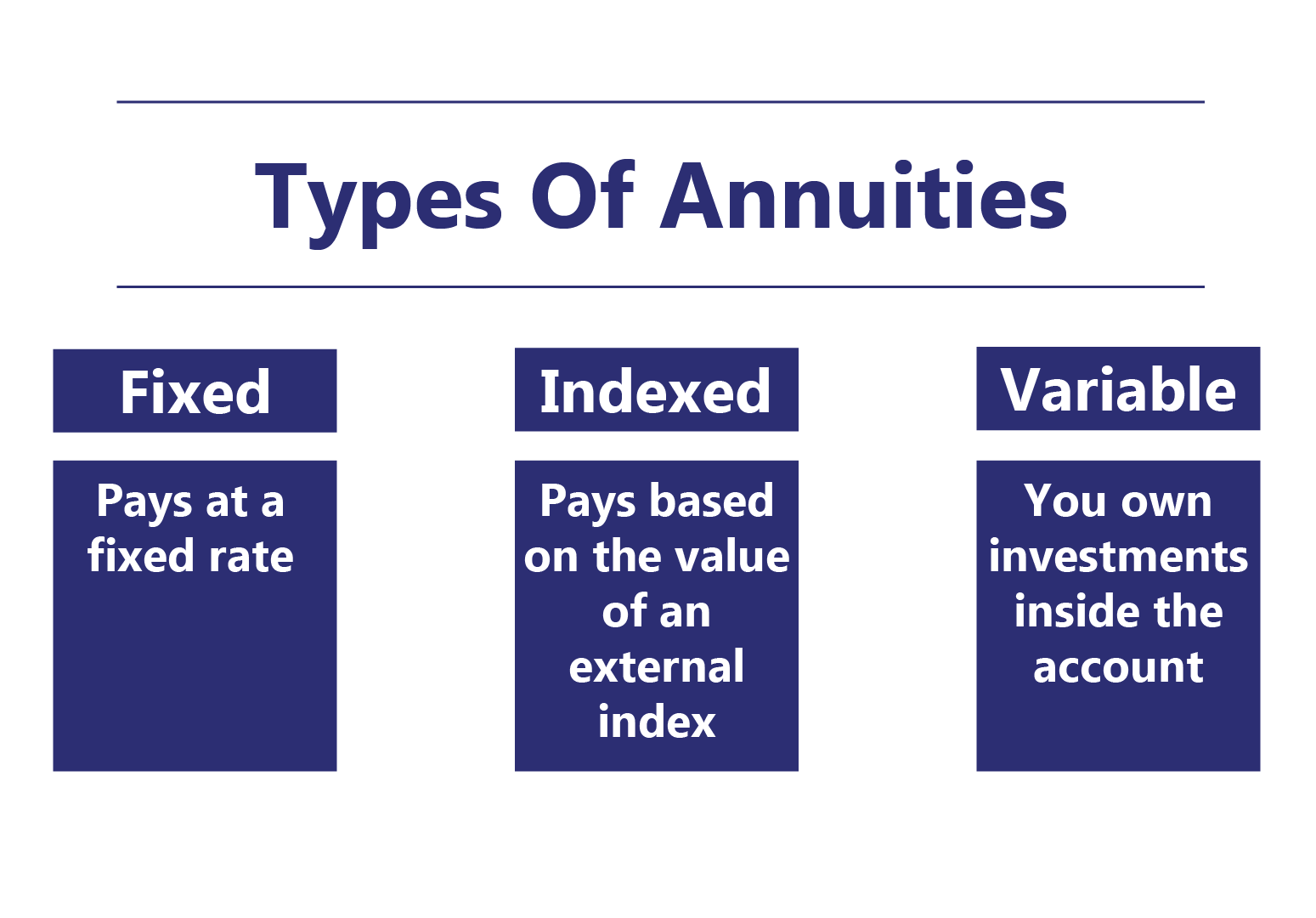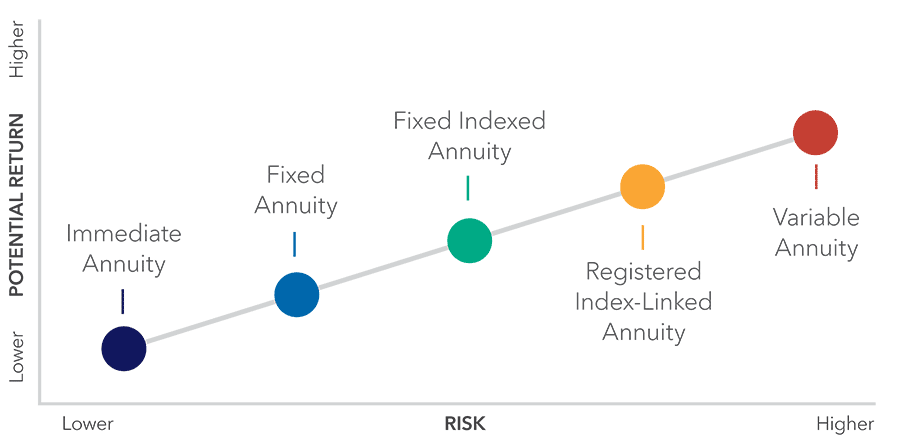All Categories
Featured
Table of Contents
Simply as with a taken care of annuity, the proprietor of a variable annuity pays an insurance firm a round figure or series of settlements in exchange for the promise of a series of future settlements in return. As stated above, while a fixed annuity expands at an ensured, continuous rate, a variable annuity grows at a variable rate that depends upon the efficiency of the underlying financial investments, called sub-accounts.

Throughout the build-up phase, properties bought variable annuity sub-accounts grow on a tax-deferred basis and are tired just when the contract proprietor takes out those revenues from the account. After the buildup stage comes the income phase. Over time, variable annuity possessions need to theoretically increase in worth up until the agreement owner decides she or he want to begin withdrawing cash from the account.
The most substantial problem that variable annuities generally present is high price. Variable annuities have a number of layers of charges and expenditures that can, in accumulation, produce a drag of up to 3-4% of the contract's value each year.
Exploring Fixed Vs Variable Annuity Key Insights on Choosing Between Fixed Annuity And Variable Annuity Defining Variable Vs Fixed Annuity Features of Smart Investment Choices Why Choosing the Right Financial Strategy Can Impact Your Future Fixed Index Annuity Vs Variable Annuities: Explained in Detail Key Differences Between Different Financial Strategies Understanding the Key Features of Long-Term Investments Who Should Consider Pros And Cons Of Fixed Annuity And Variable Annuity? Tips for Choosing the Best Investment Strategy FAQs About Choosing Between Fixed Annuity And Variable Annuity Common Mistakes to Avoid When Choosing a Financial Strategy Financial Planning Simplified: Understanding Your Options A Beginner’s Guide to Annuities Variable Vs Fixed A Closer Look at How to Build a Retirement Plan
M&E expenditure fees are computed as a portion of the agreement worth Annuity providers hand down recordkeeping and other management prices to the agreement proprietor. This can be in the form of a level yearly cost or a portion of the contract value. Administrative fees may be included as part of the M&E threat charge or might be evaluated individually.
These costs can vary from 0.1% for passive funds to 1.5% or more for proactively handled funds. Annuity agreements can be tailored in a number of ways to offer the certain needs of the agreement owner. Some typical variable annuity riders consist of ensured minimum build-up advantage (GMAB), ensured minimum withdrawal benefit (GMWB), and assured minimal earnings advantage (GMIB).

Variable annuity payments supply no such tax reduction. Variable annuities have a tendency to be extremely ineffective automobiles for passing wealth to the following generation due to the fact that they do not delight in a cost-basis modification when the initial contract proprietor dies. When the owner of a taxable investment account dies, the cost bases of the financial investments held in the account are gotten used to show the marketplace prices of those investments at the time of the proprietor's death.
Highlighting the Key Features of Long-Term Investments Everything You Need to Know About Fixed Annuity Or Variable Annuity Defining the Right Financial Strategy Advantages and Disadvantages of Annuities Variable Vs Fixed Why Choosing the Right Financial Strategy Matters for Retirement Planning Fixed Annuity Vs Variable Annuity: A Complete Overview Key Differences Between Fixed Vs Variable Annuity Understanding the Risks of Long-Term Investments Who Should Consider Strategic Financial Planning? Tips for Choosing the Best Investment Strategy FAQs About Planning Your Financial Future Common Mistakes to Avoid When Planning Your Retirement Financial Planning Simplified: Understanding Your Options A Beginner’s Guide to Immediate Fixed Annuity Vs Variable Annuity A Closer Look at Immediate Fixed Annuity Vs Variable Annuity
Such is not the situation with variable annuities. Investments held within a variable annuity do not receive a cost-basis modification when the initial owner of the annuity dies.
One substantial concern associated with variable annuities is the potential for problems of interest that might feed on the component of annuity salesmen. Unlike a monetary advisor, that has a fiduciary duty to make financial investment choices that profit the customer, an insurance broker has no such fiduciary commitment. Annuity sales are extremely financially rewarding for the insurance coverage experts who sell them as a result of high in advance sales compensations.

Several variable annuity contracts have language which positions a cap on the portion of gain that can be experienced by certain sub-accounts. These caps avoid the annuity proprietor from fully joining a part of gains that might otherwise be appreciated in years in which markets create substantial returns. From an outsider's point of view, it would appear that investors are trading a cap on financial investment returns for the previously mentioned guaranteed flooring on financial investment returns.
As noted over, surrender fees can severely restrict an annuity proprietor's capacity to relocate assets out of an annuity in the early years of the contract. Better, while the majority of variable annuities enable contract proprietors to withdraw a specified quantity throughout the accumulation phase, withdrawals yet amount typically lead to a company-imposed cost.
Withdrawals made from a fixed passion rate financial investment alternative might likewise experience a "market value modification" or MVA. An MVA adjusts the worth of the withdrawal to reflect any changes in rate of interest from the time that the money was spent in the fixed-rate option to the time that it was withdrawn.

On a regular basis, also the salespeople who market them do not totally recognize just how they work, and so salesmen in some cases prey on a buyer's emotions to sell variable annuities rather than the qualities and suitability of the products themselves. Our company believe that investors should fully comprehend what they have and just how much they are paying to have it.
Highlighting the Key Features of Long-Term Investments Everything You Need to Know About Fixed Vs Variable Annuity Pros Cons Breaking Down the Basics of Investment Plans Benefits of Fixed Vs Variable Annuities Why Retirement Income Fixed Vs Variable Annuity Is Worth Considering Fixed Index Annuity Vs Variable Annuity: A Complete Overview Key Differences Between Variable Annuities Vs Fixed Annuities Understanding the Risks of Fixed Vs Variable Annuities Who Should Consider Fixed Vs Variable Annuity Pros Cons? Tips for Choosing the Best Investment Strategy FAQs About Planning Your Financial Future Common Mistakes to Avoid When Planning Your Retirement Financial Planning Simplified: Understanding Fixed Vs Variable Annuity Pros Cons A Beginner’s Guide to Smart Investment Decisions A Closer Look at How to Build a Retirement Plan
Nonetheless, the exact same can not be stated for variable annuity properties kept in fixed-rate investments. These assets legally belong to the insurer and would for that reason go to danger if the firm were to stop working. Any type of assurances that the insurance business has actually agreed to provide, such as a guaranteed minimum income benefit, would certainly be in inquiry in the event of a service failing.
Prospective purchasers of variable annuities ought to comprehend and think about the economic problem of the providing insurance firm before entering into an annuity agreement. While the advantages and downsides of numerous kinds of annuities can be questioned, the real problem surrounding annuities is that of viability. In other words, the question is: that should own a variable annuity? This question can be challenging to answer, given the myriad variants available in the variable annuity cosmos, but there are some basic guidelines that can help investors make a decision whether or not annuities must play a function in their financial plans.
As the stating goes: "Buyer beware!" This short article is prepared by Pekin Hardy Strauss, Inc. Lifetime income from annuities. ("Pekin Hardy," dba Pekin Hardy Strauss Riches Monitoring) for informative objectives just and is not planned as a deal or solicitation for company. The info and data in this write-up does not comprise legal, tax obligation, audit, financial investment, or other professional suggestions
Table of Contents
Latest Posts
Analyzing Strategic Retirement Planning Everything You Need to Know About Financial Strategies Breaking Down the Basics of Investment Plans Features of Smart Investment Choices Why Choosing the Right
Exploring the Basics of Retirement Options Key Insights on Fixed Annuity Vs Variable Annuity Breaking Down the Basics of Fixed Annuity Vs Variable Annuity Advantages and Disadvantages of Different Ret
Breaking Down Your Investment Choices A Closer Look at How Retirement Planning Works Breaking Down the Basics of Fixed Vs Variable Annuities Features of Smart Investment Choices Why Fixed Indexed Annu
More
Latest Posts